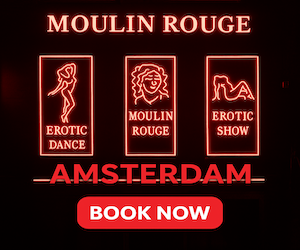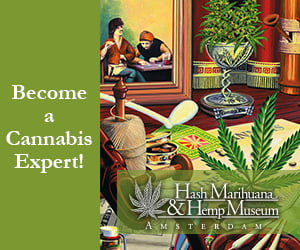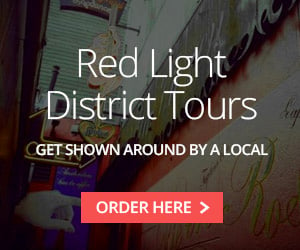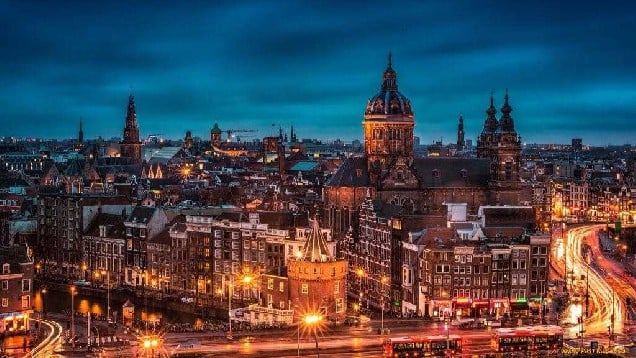
Red Light District in Amsterdam: The Essential Insider’s Guide in 2025
Red Light District Amsterdam: The Ultimate Guide
Explore the Red Light District in Amsterdam with us! Our easy-to-read guide covers everything from its history to today’s scene. Perfect for all curious about this famous spot. Keep reading to find out more!
MOULIN ROUGE TICKETS
What is available in Amsterdam Red Light District?

1. Sex Work and Adult Entertainment
- Window Brothels: Sex workers stand in windows to offer their services. Prostitution is legal and regulated.
- Erotic Shows: Places like Moulin Rouge offer live erotic performances.
- Sex Shops: Shops selling adult Sexspielzeug, lingerie, and other products.
- Peep Shows and Strip Clubs: These stripclubs in Amsterdam offer short adult performances for a fee.
2. Museen
- Red Light Secrets Museum: Learn about the lives of sex workers and the history of prostitution.
- Erotic Museum: Explore art and exhibits related to sex and erotica.
- Hash, Marihuana & Hemp Museum: Learn about cannabis and hemp history and culture.
- Sex Museum: One of the oldest museums about sexuality.
3. Coffeeshops
- You can buy and smoke cannabis legally in the Red Light District. Famous Coffeeshops include Grey Area, The Bulldog and Green House.
4. Historic and Cultural Spots
- Oude Kerk (Old Church): The oldest building in Amsterdam, located in the district.
- Canals and Dutch Architecture: Walk around the scenic canals and old buildings.
5. Bars and Restaurants
- The red light district has many Cafés und Restaurants with a vibrant nightlife. You can find local Dutch food and international dishes.
6. No Guided Tours
- Group guided tours are no longer allowed in the Red Light District. However, you can explore the area on your own with this Amsterdam Red Light District tour.
7. Shopping
- Small shops offer souvenirs, crafts, and unique gifts.
The Red Light District is safe and regulated, but be respectful. Do not take photos of sex workers or inside brothels.
History & Evolution of the Red Light District

The Red Light District, known locally as De Wallen, is not just a major tourist attraction in Amsterdam; it’s a significant part of the city’s historical fabric.
This area has been associated with the sex trade since the 14th century, originally due to its proximity to the city’s harbor.
Most people don’t realize the Amsterdam Red Light District is one of the city’s oldest and most historic neighborhoods. It’s not just about nightlife—there’s incredible architecture, hidden churches, and centuries of stories here.
Martijn Snoeren, Senior local guide
Over centuries, it evolved from a seedy area with a reputation for vice into a regulated and much-visited part of Amsterdam. In recent years, the district has seen transformations aimed at curbing the negative aspects associated with it, such as human trafficking and crime.
These efforts include city-led initiatives to reduce the number of red-light windows and replace them with art galleries, boutiques, and other businesses.
We find the history of De Wallen very interesting. It goes back to the origins of the Dutch capital. In our opinion, Amsterdam Red Light District shows the liberal thinking of the Dutch.

The Red Light District stands as a testament to Amsterdam’s liberal attitudes but also reflects the city’s ongoing struggle to balance tourism, local life, and the well-being of Sexarbeiterinnen.
Visitors today will find a blend of historical buildings, museums (like the famous Red Light Secrets – Museum of Prostitution), bars, Sexshows and the characteristic red-lit windows.
The area’s evolution is ongoing, and understanding its history provides crucial context for appreciating its complex present-day status.
Amsterdam Red Light District Legal & Social Aspects

The Red Light District operates within a unique legal framework that sets Amsterdam apart from most other cities.
Prostitution has been legal and regulated in the Netherlands since 2000, with sex workers required to register with the local chamber of commerce and pay taxes. This legal recognition is aimed at ensuring better conditions and protection for sex workers.
Similarly, the sale and consumption of cannabis in designated coffee shops are decriminalized, contributing to the district’s liberal ambiance. These laws continue to provoke debate, with some arguing that they help reduce crime and improve safety, while others claim they encourage illegal activities.
Socially, Amsterdam Red Light District has a dual character:
On the one hand, it’s a symbol of the city’s tolerance and progressive values.
On the other, it raises questions about morality, exploitation, and the commodification of bodies.
The Red Light District in Amsterdam existence and city’s approach to these issues are often used as case studies in discussions about the best way to manage and regulate the sex trade.
For visitors, it’s essential to approach the area with an understanding of these legal and social complexities, recognizing that behind the district’s allure lies a nuanced and often contentious reality.
🚫 Red Light District Tours Banned – Here’s the Legal Alternative
Since 2020, the City of Amsterdam has banned all guided group tours that pass by sex workers’ windows in the Red Light District. These changes were made to reduce nuisance, protect privacy, and preserve the neighborhood’s unique character. As a result, traditional guided tours are no longer allowed in De Wallen. But that doesn’t mean you can’t explore it in a respectful, informed way.
The only legal and respectful way to tour the Red Light District today is with our GPS-guided audio tour, created in collaboration with 22 local experts, including historians, police officers, sex workers, and residents. You can explore the area at your own pace, with accurate, up-to-date commentary triggered automatically by your location.
🎧 Experience Amsterdam’s Red Light District like a local — download the tour here:
👉 Red Light District Audio Tour
Cultural Significance & Misconceptions
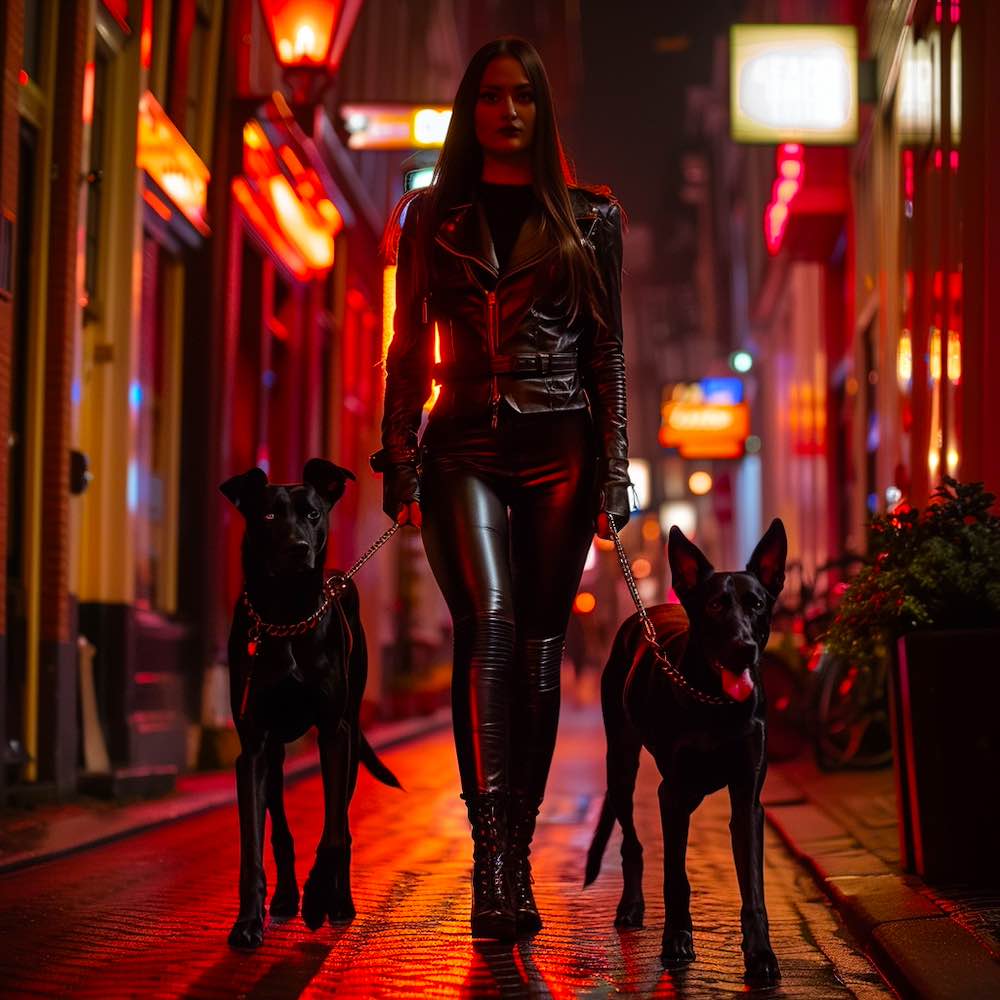
The Red Light District in Amsterdam is not only a hub of adult entertainment; it’s also a cultural landmark with deep significance for Holland’s capital.
It embodies the city’s historical tolerance and liberal attitudes towards issues considered taboo elsewhere. This Red light District, however, is often misunderstood by outsiders.
Many view it merely as a tourist destination without appreciating its cultural and historical significance. The area is not just about sex and drugs; it’s a living, breathing part of the city with a rich history and a diverse community.
Misconceptions about the Red Light District in Amsterdam often stem from sensationalized media portrayals that focus on crime and debauchery, overshadowing the area’s cultural richness and the everyday lives of those who work and live there.
In reality, the Red Light District is a complex area where art, history, commerce, and issues of social justice intersect.
Efforts have been made to reshape its image, emphasizing its cultural aspects, such as its architecture, historic canals, and unique businesses that coexist alongside the sex industry.
Visitors are encouraged to look beyond the surface to understand the district’s true nature and significance in Amsterdam’s cultural landscape.
Das unzensierte Rotlichtviertel in Amsterdam ist ein Gebiet, das aufgrund seiner Einzigartigkeit viele Fragen aufwirft. Hören Sie auf, nach den richtigen Informationen zu suchen. Das ist nicht mehr nötig. Sie haben es gerade gefunden! Entdecken Sie jetzt die wichtigsten Fakten zum Rotlichtviertel in Amsterdam.
GET AMSTERDAM APP >Amsterdam Red Light District Facts
Discover these facts below before visiting!

1 | Red Light District Amsterdam is known as De Wallen
Dieses Viertel ist weltweit als Rotlichtviertel bekannt, aber in den Niederlanden heißt es De Wallen.
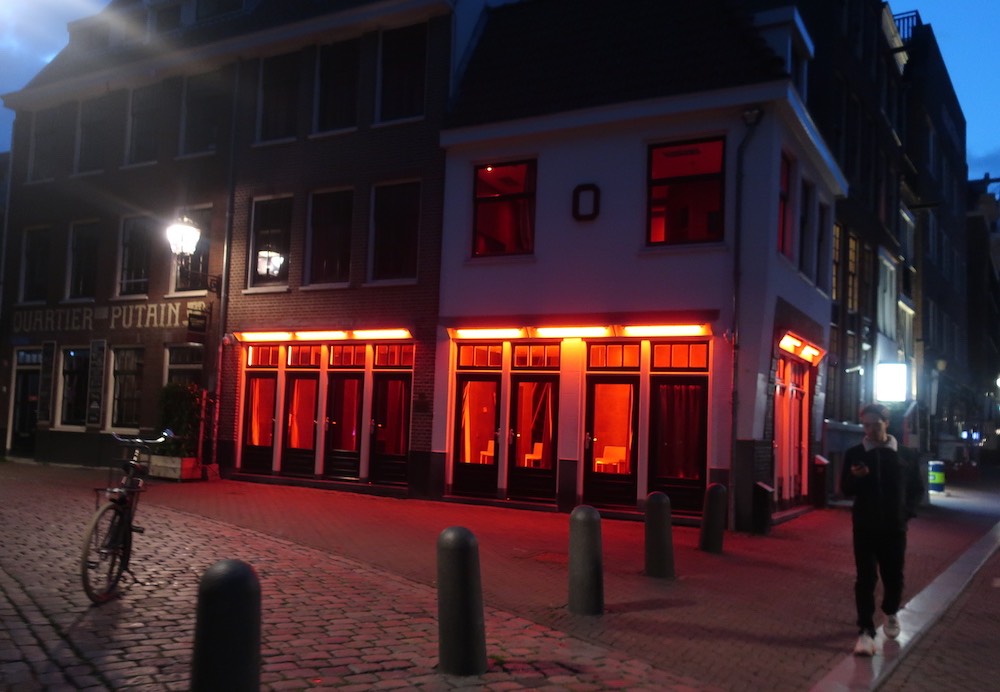
A city archaeologist describes (during this Amsterdam Red Light District tour) was De Wallen bedeutet:
The word ‘Wallen’ comes from the canals that cross section the Red Light District; the Oudezijds Voorburgwal and the Oudezijds Achterburgwal. A ‘burgwal’ means ‘defensive wall’ with a canal in front, but now the name is used for the canals itself, which were dug as a defense for Amsterdam.
2 | Red Light District Amsterdam has 201 window brothels
Mit 201 Fensterbordellen ist De Wallen das größte der Prostitution angesehen werden. Gebiet in den Niederlanden. Die Fensterbordelle werden tagsüber und nachts von Fensterbordellbetreibern vermietet.
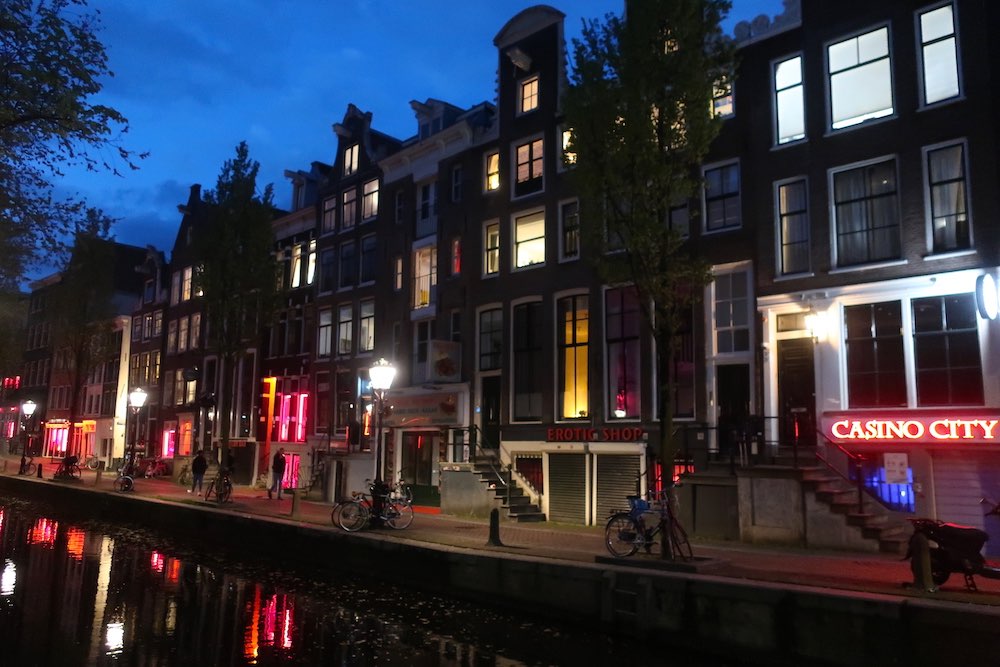
De Wallen can accommodate up to 402 Sexarbeiterinnen per day. However, it never happens that all Red Light windows are rented out during the day as well as at night.
Im Laufe der Zeit hat sich die Zahl der Amsterdam Red Light windows deutlich zurückgegangen. Im Jahr 2011 gab es in diesem Viertel noch 297 Fensterbordelle. Und 2006 waren es sogar 401.
3 | It counts 350 sex workers
Es wird geschätzt, dass es etwa 350 . gibt Prostituierte Arbeitet im Rotlichtviertel in Amsterdam.

Die Mehrheit der Prostituierten arbeitet lieber in Nachtschichten.
4 | It can be visited 24/7
The Red Light District in Amsterdam is always open to visit. This is partly because it is an inhabited neighborhood. That is why De Wallen can be visited 7 days a day, 24 hours a day.

Es ist jedoch nicht so, dass alles in der Umgebung rund um die Uhr zugänglich ist. Die Fensterbordelle sind zwischen 6 und 8 Uhr geschlossen. Die meisten Restaurants schließen um Mitternacht. Und Bars sind am Wochenende bis 15:00 Uhr geöffnet.
5 | Prostitutes Can Not Accept Creditcards
Although many Sexarbeiterinnen would, they cannot accept credit card payments. This is because payment companies do not want to be associated with sex work.

Infolgedessen akzeptieren Zahlungsunternehmen und Banken keine Sexarbeiterinnen als Kunden. Aus diesem Grund können Kunden von Sexarbeiterinnen nicht mit Kreditkarte bezahlen.
6 | It Cost At Least 50 Euro To Have Sex With A Window Prostitute
Fensterprostituierte in Amsterdam verlangen für 15 Minuten mindestens 50 Euro für Sex.
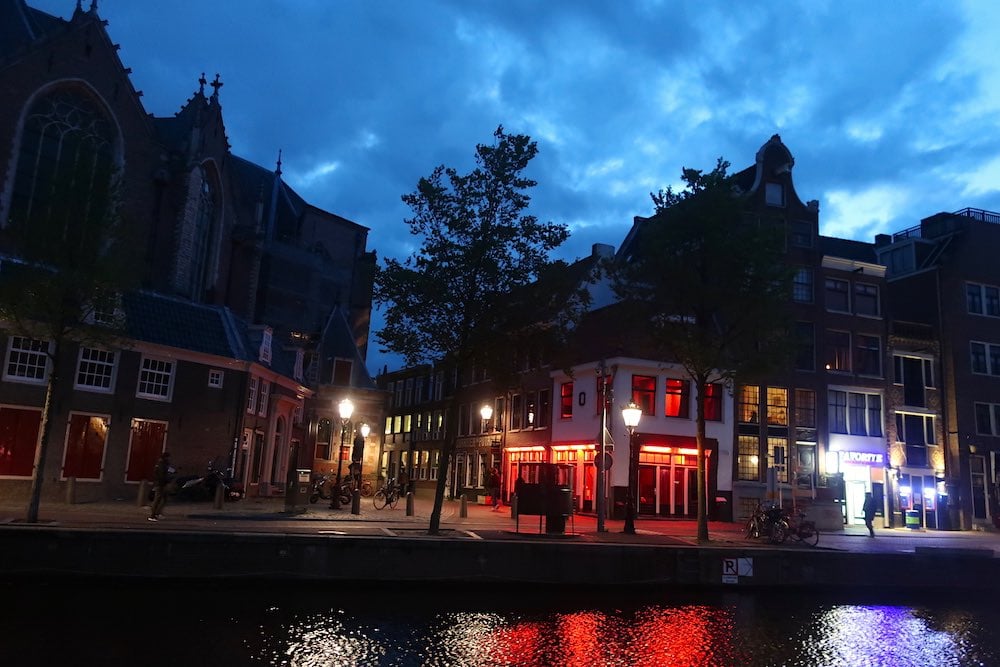
Kunden und Prostituierte verhandeln Preise und Leistungen meist am Eingang des Fensterbordells.
7 | It Has 4,465 Inhabitants
Das Rotlichtviertel wird derzeit bewohnt von 4.465 Einwohner. Im Jahr 2019 hatte das Rotlichtviertel 4.295 Einwohner.

Die Altersverteilung der Bewohner im Rotlichtviertel sieht wie folgt aus:
✦ 0 – 15 Jahre: 200 Einwohner
✦ 15 – 25 Jahre: 695 Einwohner
✦ 25 – 45 Jahre: 2.195 Einwohner
✦ 45 – 65 Jahre: 940 Einwohner
✦ > 65 Jahre: 425 Einwohner
Daraus ergeben sich die obigen Zahlen Bevölkerungsumfrage.
8 | 1,757 Crimes Are Committed Annually
Im Jahr 2020 wurden 1.756 Straftaten von der Polizei im Rotlichtviertel in Amsterdam registriert.

Die fünf am häufigsten begangenen Verbrechen in dieser Gegend:
- Eigentumsdelikte
- Taschendiebstahl
- Verletzung der öffentlichen Ordnung
- Diebstahl von Fahrrädern oder Mopeds
- Ladendiebstahl
Lokal Kriminalermittlung in Amsterdam hat die obigen Zahlen gezeigt.
9 | Cannabis Shops Do Not Allow The Use Of Tobacco
In Cannabis-Geschäften, die auch als . bekannt sind, ist es nicht erlaubt, Tabak zu rauchen Coffeeshops.

In the Netherlands it is prohibited by law to smoke tobacco inside public buildings such as restaurants, cafes, museums, etc.
Since September 2019, in addition to a smoking ban, there is also a smoking room ban in the catering industry. Smoking areas may no longer be used in all catering establishments.
Because coffeeshops fall under the catering industry, tobacco smoking areas are no longer allowed in coffeeshops. Smoking is still allowed in the coffee shop without tobacco, with tobacco substitutes or with vaporizers.
Es gibt 9 Gesetze für Coffeeshops in Holland die unbedingt eingehalten werden müssen.
10 | There Is A Daycare Next To Window Brothels And 5D Porn Cinema
Im Herzen des Rotlichtviertels befindet sich eine Kindertagesstätte für die Kinder des Kiezes. Links von diesem Kindergarten ist ein 5D Pornokino. Und auf der rechten Seite sind 6 Fensterbordelle, in denen Prostituierte aus Lateinamerika arbeiten.
11 | The Oude Kerk Is Amsterdam’s Oldest Building
Es stammt aus dem Jahr 1213 und macht De Oude Kerk das älteste Gebäude Amsterdams.
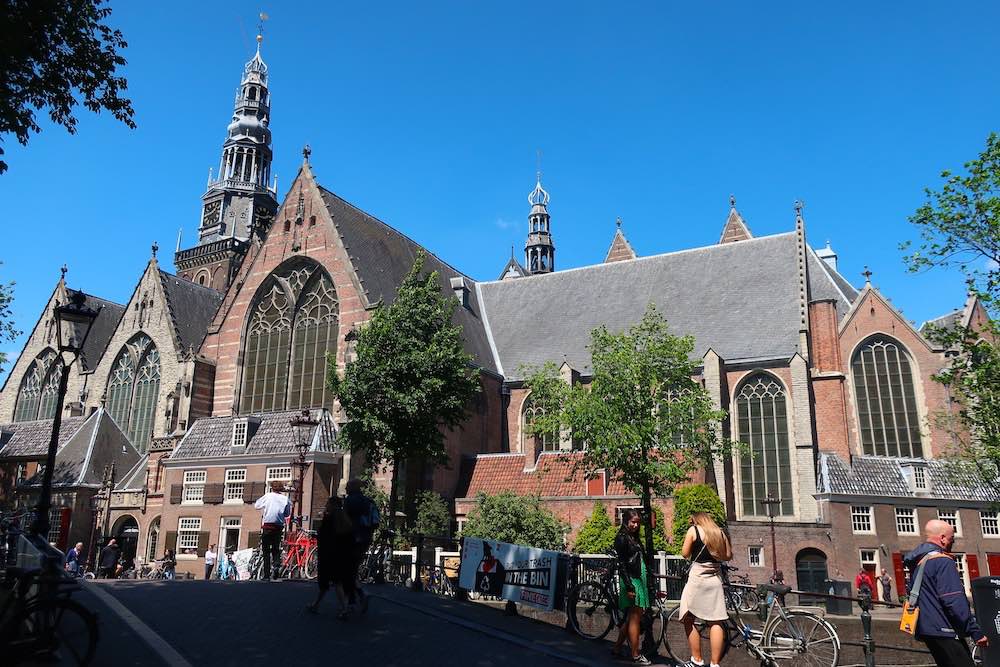
It’s located in the heart of the Red Light District and surrounded by window brothels with prostitutes. Making it not only the oldest building in Amsterdam, but also one of the most special buildings in the world.
This is the only active church in the world where window brothels with Sexarbeiterinnen are only meters away.
On the side of the Oude Kerk are not only window brothels, but also a daycare center. And next to that, the Amsterdam 5d Porn Cinema.
We believe that De Oude Kerk is a must-visit because it’s the oldest building of Amsterdam. During our visit to this church we totally forgot being in middle of the Red Light District.
12 | If You Buy Cannabis At The Bulldog, Part Of It Goes To The Salvation Army
Wenn du in Amsterdams berühmtestem Coffeeshop Gras oder Haschisch kaufst, geht ein Teil davon automatisch an wohltätige Zwecke.
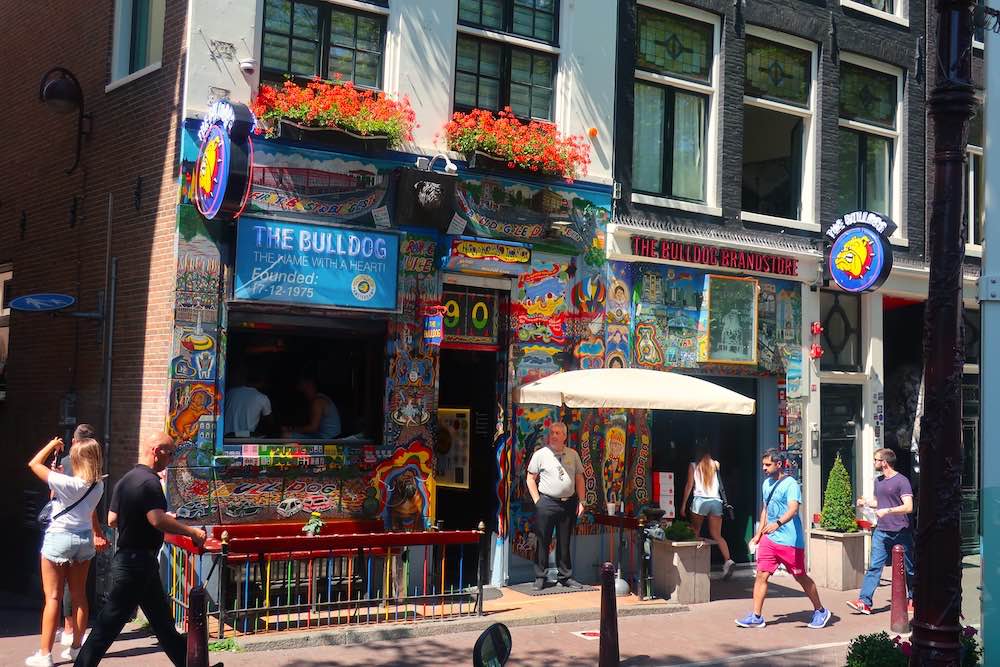
Der Besitzer des berühmten Coffeeshops The Bulldog – Henk de Vries – spendet jedes Jahr einen Teil seines Umsatzes an die Heilsarmee. Und jeder Bulldog-Mitarbeiter muss auch einen Tag im Jahr bei der Heilsarmee von Amsterdam arbeiten.
Denn Henk de Vries ist im Rotlichtviertel geboren und aufgewachsen. In seiner frühen Jugend wurde er von der Heilsarmee front woman who put him on the right path. She made sure that he behaved well, which was an essential part of his successful entrepreneurship in later life.
In this Dutch radio interview Henk de Vries said that without the help of Major Bosshardt – he would not have become successful.

Als ewigen Dank dafür unterstützt Henk de Vries die Heilsarmee kontinuierlich finanziell. Diese Organisation bietet Obdachlosen Unterkunft, Nahrung und psychische Unterstützung.
13 | Rembrandt Got Married In The Red Light District
Am 10. Juni 1634 heiratete Rembrandt Saskia Uylenburgh im Oude Kerk im Rotlichtviertel gelegen.

An diesem Tag unterschrieb der niederländische Maler das Heiratsregister der Oude Kerk in Amsterdam. Pfarrer Johannes Silvius hat das Heiratsregister für Saskia Uylenburgh unterschrieben. Auch die standesamtliche Trauung fand in der Oude Kerk statt.
14 | World’s First Stock Exchange Was Founded Here
Die Niederländer sind bekannt für ihren kommerziellen Geist. Dies war auch in der Vergangenheit der Fall.
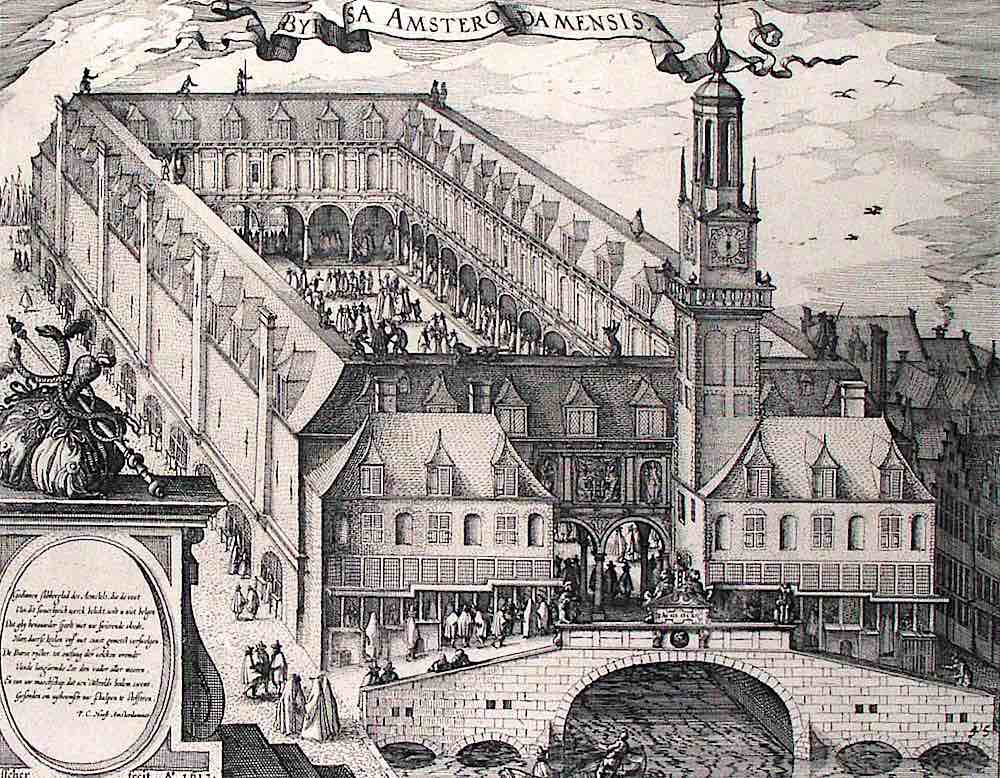
Im 17. Jahrhundert gründeten die Niederländer die first stock exchange in the world. Right in the Red Light District. Still today you can see the Amsterdam stock exchange from the Red Light District.
Go to the Warmoesstraat. It’s the building diagonally opposite the Condomerie.
15 | The Oldest House In Amsterdam Is Now A Gay Fetish Club
On Warmoesstraat 90 – an entrance street in the Red Light District – you can find the oldest preserved house in Amsterdam. This house dates from 1485.
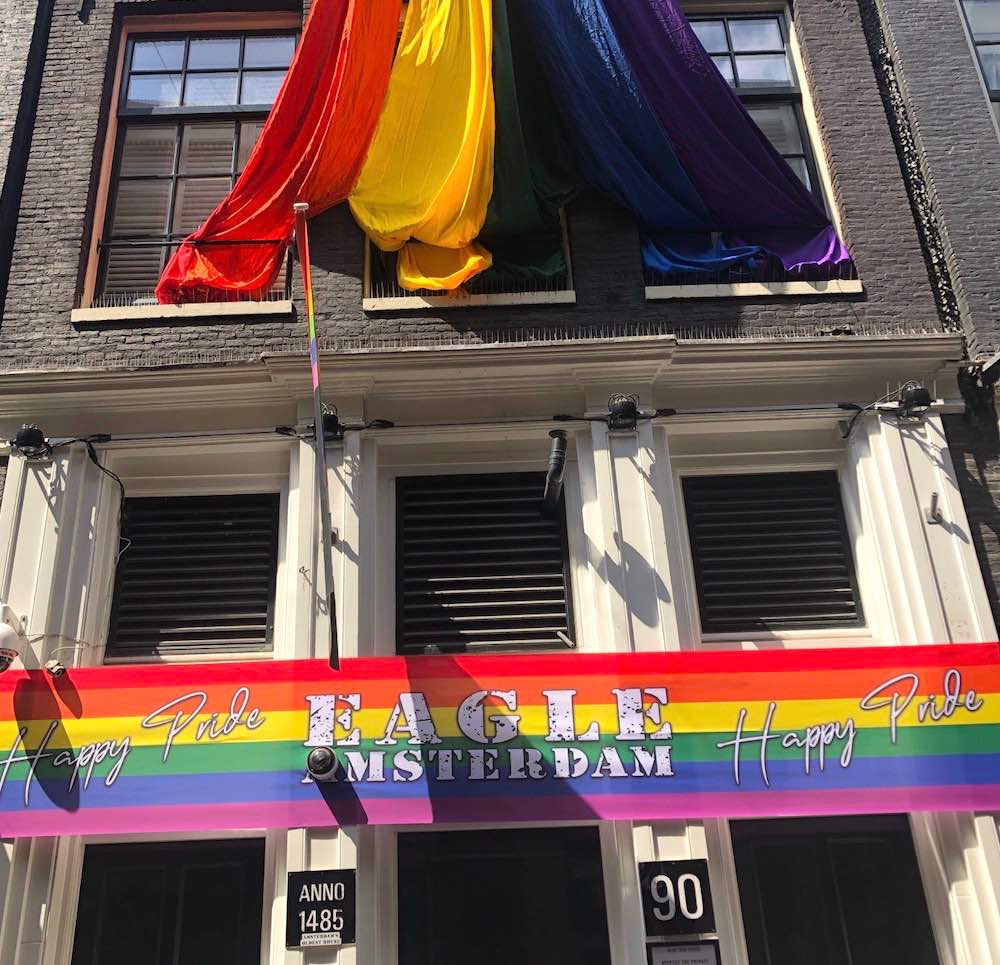
In der Warmoesstraat 90 – einer Eingangsstraße im Rotlichtviertel – steht das älteste erhaltene Haus Amsterdams. Dieses Haus stammt aus dem Jahr 1485.
The second oldest in Amsterdam dates from 1528 and is located in the Begijnhof.
16 | Prostitutes Do Not Want To Be Photographed
Do not take pictures of the Sexarbeiterinnen in the Red Light District. They do not want this. Often for privacy reasons.

Sex workers often lead a double life. Not everyone in their area is aware of their work as a prostitute. Respect this, follow the local etiquette and do not make pictures of prostitutes.
Do you really want to make a good impression on the Sexarbeiterinnen? Kindly say goodbye to them when you walk by.
It is of course allowed to take photos of all other highlights in the Red Light District.
17 | It Is Illegal To Drink Liquor On The Street
Lokal Amsterdam legislation does not allow drinking on the street in the Red Light District. Violation can be punished with a fine of 95 euros.
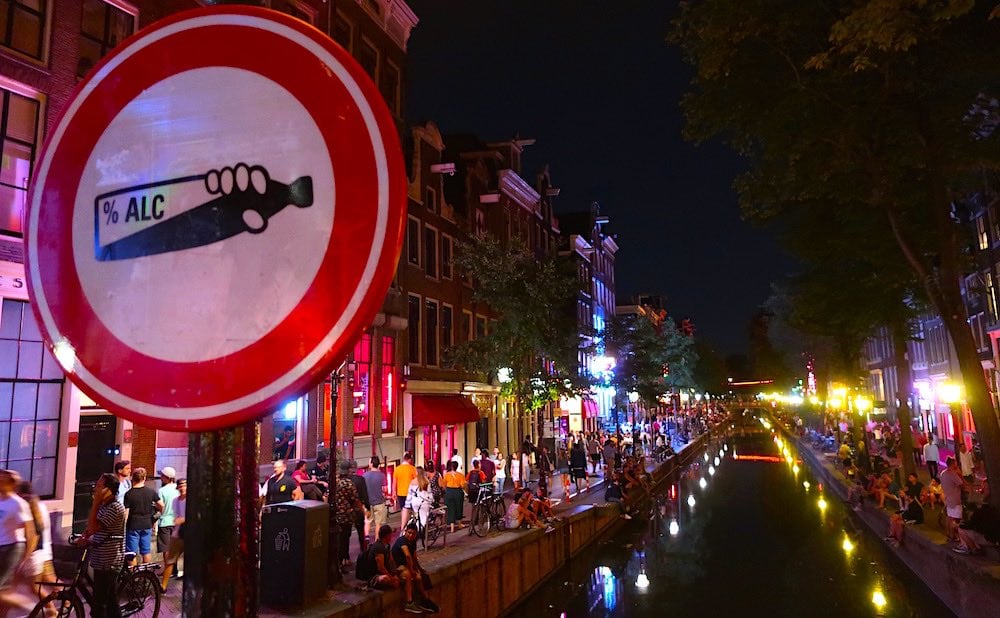
There are several signs in De Wallen that indicate that it is not allowed to drink alcohol in this area. It is allowed to consume alcohol on the terraces of the cafes and Restaurants.
18 | There Are No Male Prostitutes For Women
In general, women do not have to pay for sex. This is the main reason why there are no straight male sex workers for female clients in Amsterdam’s Red Light District. The demand is simply too low and the cost are too high.

The low demand and high costs do not make it financially interesting for straight men to work in window brothels.
Women who are willing to pay for sex can do this in Amsterdam with male escorts. This method of sex work is financially interesting for straight male escorts. This is because they do not have to rent a window brothel, which is associated with high costs. The male escorts can then simply wait until they are booked via the internet or by telephone.
Straight women who book escorts often have an erotic fantasy that they have fulfilled.
Most male escorts in The Netherlands are gay.
19 | Area With Most Space For Pedestrians in Holland
Of all neighborhoods in the Netherlands, the Red Light District ranks fifth as a neighborhood with the most space for pedestrians.
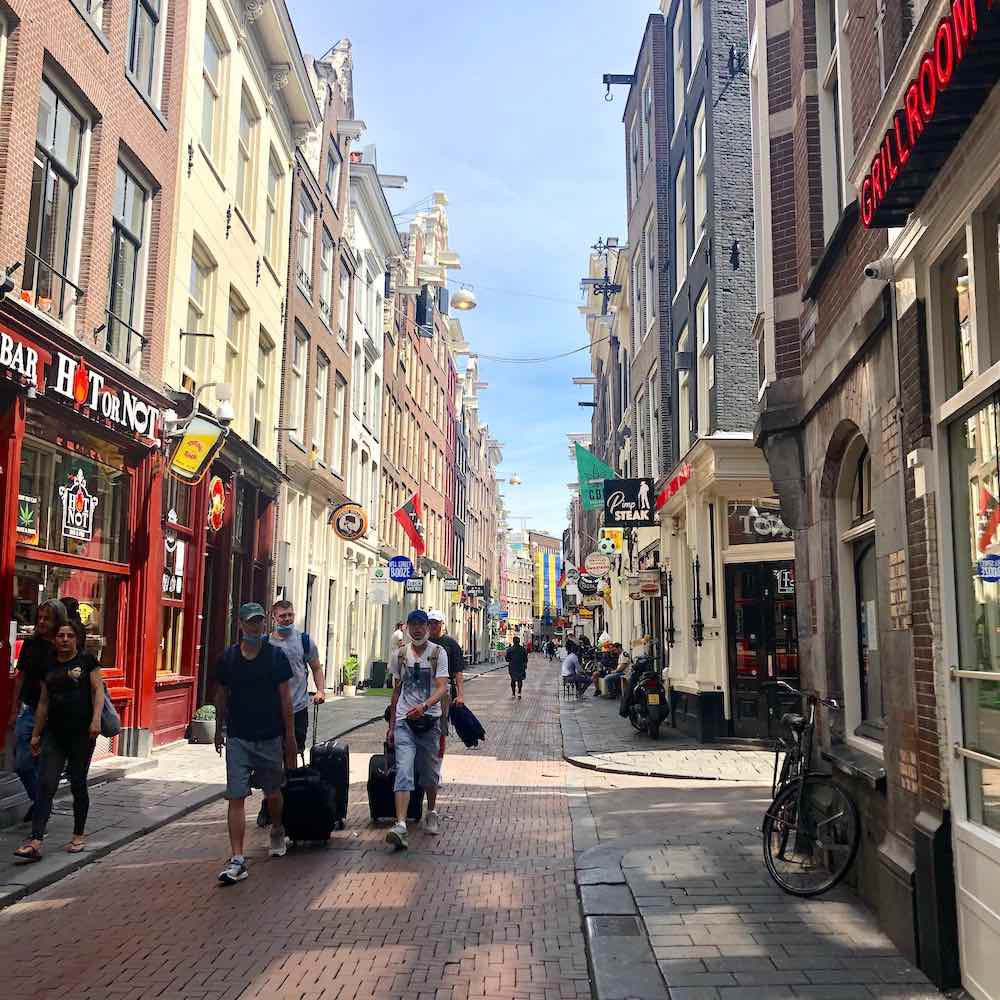
It shares the place with another neighborhood in Amsterdam, namely the Spaarndammer and Zeeheldenbuurt. This is evident from a study that examined the spatial distribution in Dutch neighborhoods.
20 | De Wallen Counts 2,095 Companies
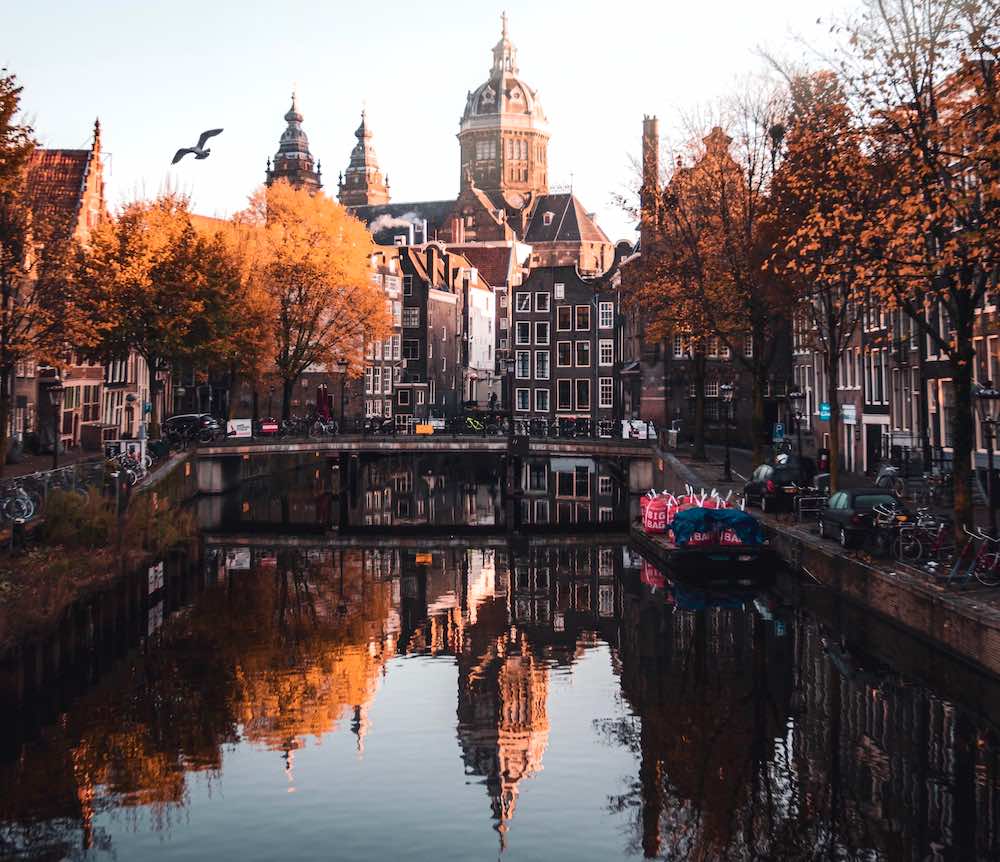
The Burgwallen Oude Zijde District has a total of 2,095 business locations. This data was collected and published in 2019 by AlleCijfers.nl
21 | Magic Truffles Are Sold In Smart Shops
In the Netherlands it is allowed to buy so-called magic truffles from the age of 18. Smartshops are allowed to sell these psychedelic drugs.
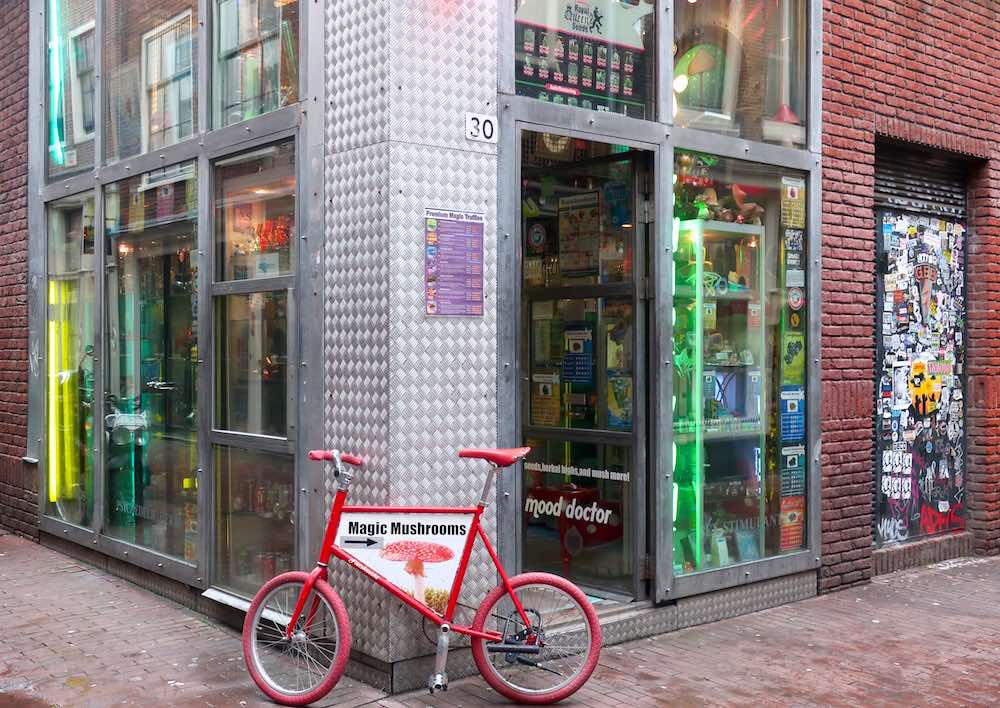
The staff members of these smart shops are also obliged to properly inform customers. There are four smart shops in the Red Light District where magic truffles.
22 | Belle Is A Sex Worker Statue
Amsterdam’s Red Light District is one of the few places in the world where there is a statue for Sexarbeiterinnen.
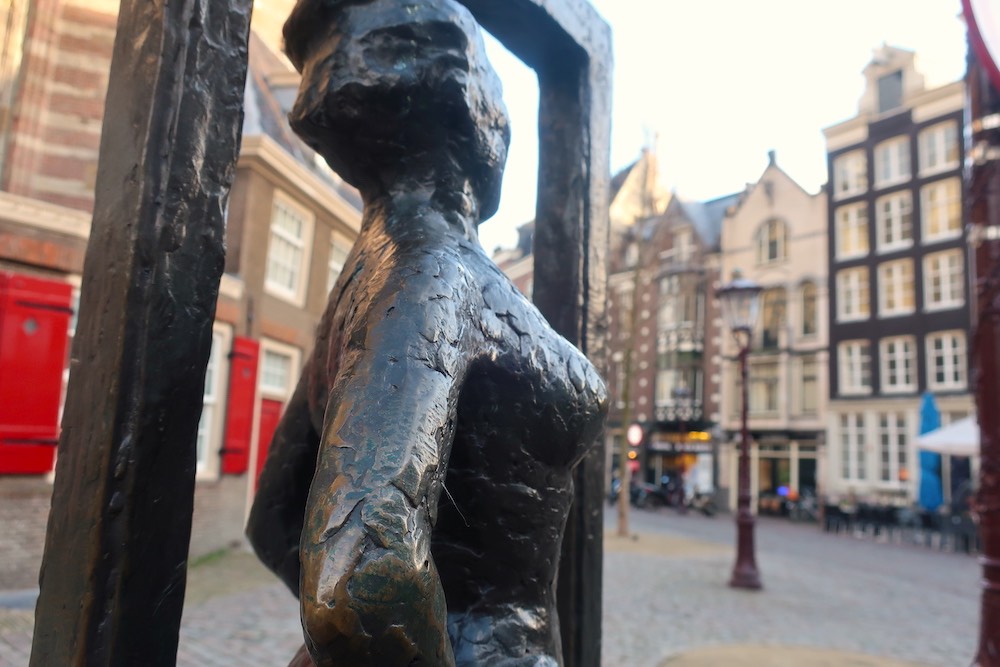
It stands in the middle of the area, next to De Oude Kerk. The statue is called Belle. A fictional person stands in a window brothel and represents all the sex workers in the world. On the statue is written: Respect sex workers around the world.
The initiative for this sex worker sculpture came from Mariska Majoor. She is an ex prostitute, founder of the Prostitution Information Center and sex worker activist.
23 | It Counts 5 Museums
Red Light District in Amsterdam has five museums. One about Dutch history and religion, one about cannabis, one about sex, one about prostitution and one about watches.
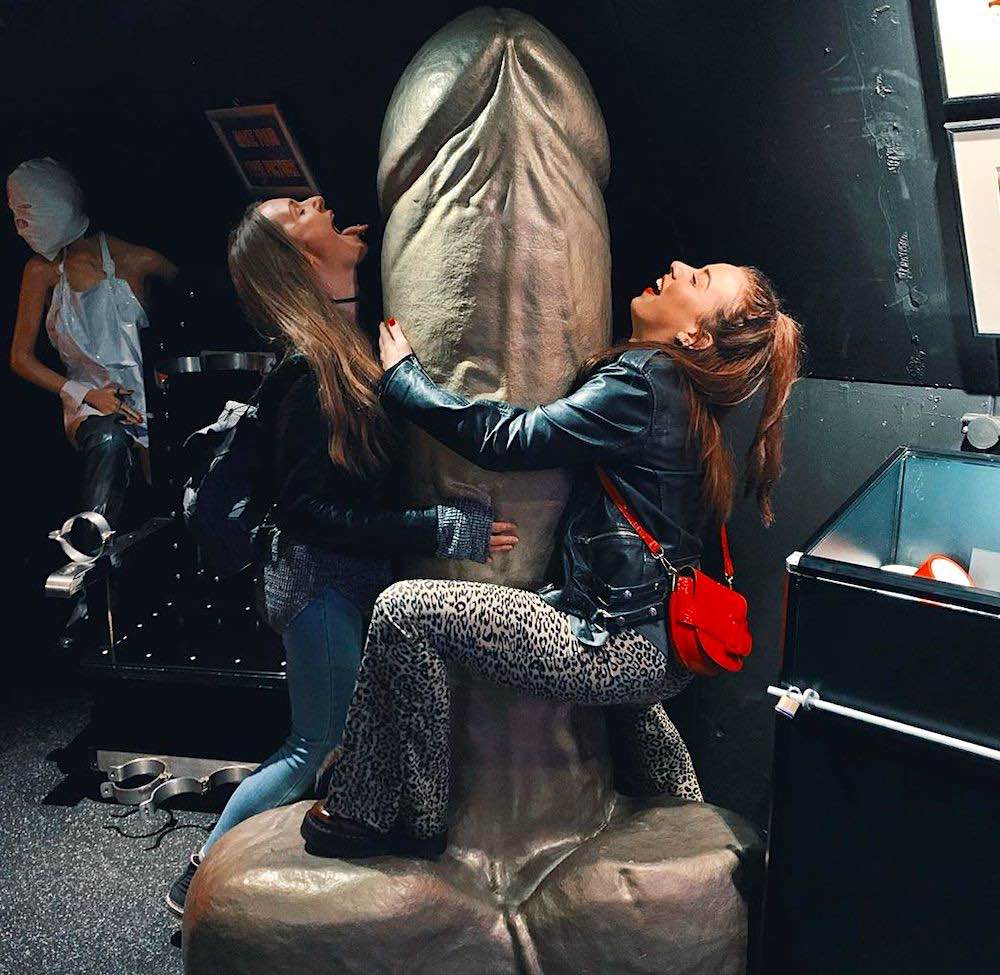
Discover these 5 Incredible Museums in Amsterdam here and get the best e-tickets now!
24 | Fish live in the canals of Amsterdam
Many different types of fish live in the canals and rivers of Amsterdam. Pike, roach, perch, bream and carp can be found in the canals of Amsterdam. Also in the Red Light District.
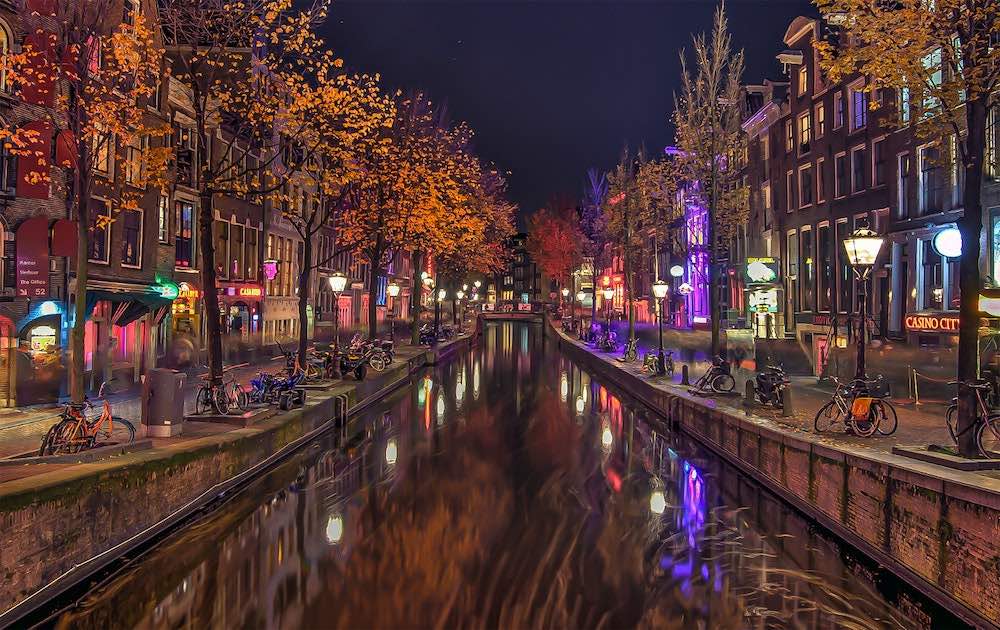
There is hardly any fishing here. However, magnet fishermen can be spotted regularly.
LESEN SIE AUCH:
Karte des Amsterdamer Rotlichtviertels
